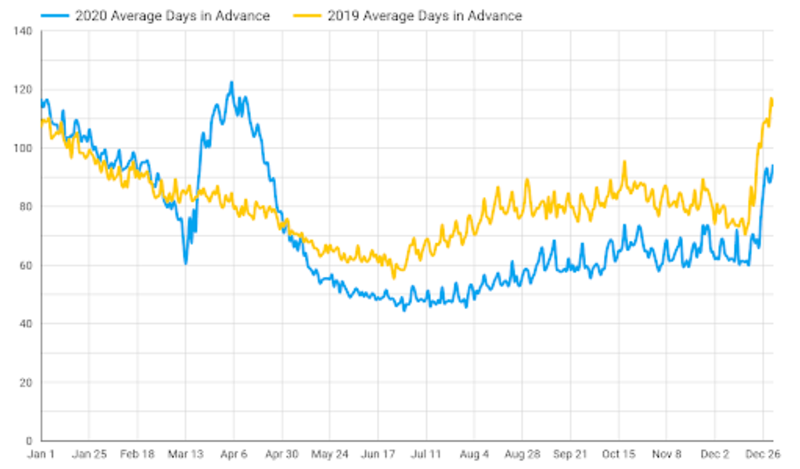This is part three in our four-part series exploring the data destination marketers need to consider at each stage of the “Awareness-Interest-Desire-Action” funnel.
Having previously covered metrics for assessing traveler awareness of your destination and their interest in coming to it, we can now move another step down our simple, four-segment marketing funnel and discuss how a DMO might measure its website’s contribution to traveler desire for the destination.
At this stage of the consumer’s purchasing process, you’re looking for evidence of people who have learned that your destination exists, researched what makes it a good choice, and decided that they want to come. They still might not visit for one reason or another, but they definitely think it would be a good trip. This is where referral metrics shine for DMOs.
A referral is when someone on a DMO site clicks off to visit another site that you link to. Technically, any click to another domain is a referral, but for DMOs we’re really interested in clicks to partner sites like hotels, restaurants, events and more. While a user might do this at any point in the purchase process, investigating hospitality businesses directly is a strong indication that someone is interested in visiting and wants to work out the details of where to stay and what to do. It’s one of the best outcomes there can be for a session on a DMO site.
Referral clicks aren’t necessarily tracked out of the box in Google Analytics (note: in GA4, they will be!), but our CMS team installs basic referral click tracking on all listings, offers and events for each site we launch. The data can be found in the Events section of your Google Analytics if you work with us on the CMS side. This click tracking not only counts the referrals, but distinguishes between different kinds of them, such as website clicks, booking clicks, phone calls and clicks to social media accounts for the partner.

Here’s how the referral mix looks for one anonymous, fairly typical, well-trafficked client site. We’re looking at actions per pageview on events, listings and offers. Note that some of these actions can occur from a search results page, so technically these numbers aren’t totally accurate, but the math should still help us understand which type of content produces different actions at the highest rates.
You can see that plain website clicks are easily the most popular. Booking clicks don’t exist for all content types, so it’s no surprise to see them lower. It’s not surprising, given current trends, that the click-to-call numbers are so low. Additionally, while people will click to partner websites willingly, social media referrals were essentially unmeasurable. Mostly, when we talk about referrals, we’re talking about plain site clicks and, for those businesses where it’s relevant, bookings.
Bookings may be fewer in number than simple referrals, but they’re obviously an even stronger indication of traveler interest, so they’re hugely valuable. The industry-wide trends in this metric have been fascinating throughout the shutdown.

These are the “hotel searches” (i.e. clicks to hotel booking pages from Simpleview client sites) for all of 2020 on our BookDirect referral engine, which powers the booking referral functionality for many of our sites. No shock, searches cratered immediately after the shutdown. The surprising thing is that by summer, even as overall DMO sessions failed to recover to 2019 levels, bookings actually surged into growth territory. That fell off somewhat in the winter, but we remain ahead of our year-over-year pace. So even in a pandemic, users have kept clicking from our sites to hotel booking tools.

The details of their behavior have changed, though. During the initial shutdown, when traffic was lowest and spirits ebbed, our users started searching much further out into the future when they referred to partner sites. Then, as they picked up the volume of site visits and especially booking clicks, they went the other way, searching with much shorter planning time frames, and they’ve continued to do so. This all makes sense (search far ahead when you can’t travel at all, search closer in when you’re planning shorter trips to places you can drive to), but it’s fascinating to see exactly how it’s played out.
So even in a pandemic, people are planning travel, engaging in quick trips, and leaving evidence of their purchase activities on our websites. Referrals remain one of the very best metrics for DMOs, because they represent fairly direct near-purchase activity; few people are clicking booking links without any interest in booking a stay somewhere, even if they don’t convert with that particular hotel. Keep tracking this measure for your site, and make encouraging referrals a priority with any design or content updates you make to your site.

